Filter by

The Cortex and the Critical Point: Understanding the Power of Emergence
Individual neurons have limited computational powers, but when they work together, it is almost like magic. Firing synchronously and then breaking off to improvise by themselves, they can be paradoxically both independent and interdependent. This happens near the critical point: when neurons are poised between a phase where activity is damped and a phase where it is amplified, where information…
- Edition
- -
- ISBN/ISSN
- 9780262370349
- Collation
- -
- Series Title
- -
- Call Number
- -
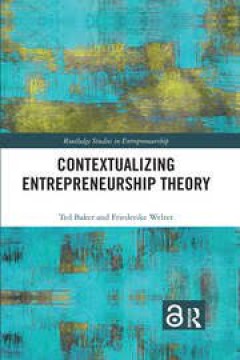
Contextualizing Entrepreneurship Theory
As the breadth and empirical diversity of entrepreneurship research have increased rapidly during the last decade, the quest to find a "one-size-fits-all" general theory of entrepreneurship has given way to a growing appreciation for the importance of contexts. This promises to improve both the practical relevance and the theoretical rigor of research in this field. Entrepreneurship means diffe…
- Edition
- -
- ISBN/ISSN
- -
- Collation
- -
- Series Title
- -
- Call Number
- -
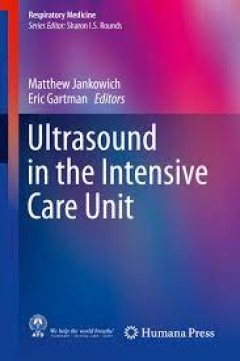
Ultrasound in the Intensive Care Unit
Ultrasound in the Intensive Care Unit explores the current state of evidence supporting use of bedside ultrasound for procedural guidance and for the critical care-focused assessment of a variety of organ systems. This text covers standard practice areas, such as ultrasound guidance for vascular access in the ICU, as well as novel, less well-known applications such as the use of ultrasound for …
- Edition
- -
- ISBN/ISSN
- 978-1-4939-1723-5
- Collation
- -
- Series Title
- -
- Call Number
- -

Ultrasonography in the ICU Practical Applications
This text presents a basic guide of the principles and applications of ultrasound in the critical care setting. The text also addresses the basic and clinical uses of ultrasound, including clinical cases at the end of each of the 7 sections of the clinical subdivisions. The final chapters focus on the issues of training, certification, credentialing and billing. These discussions make the text …
- Edition
- -
- ISBN/ISSN
- 978-3-319-11876-5
- Collation
- -
- Series Title
- -
- Call Number
- -

Twilight of the Anthropocene Idols
Following on from Theory and the Disappearing Future, Cohen, Colebrook and Miller turn their attention to the eco-critical and environmental humanities’ newest and most fashionable of concepts, the Anthropocene. The question that has escaped focus, as “tipping points” are acknowledged as passed, is how language, mnemo-technologies, and the epistemology of tropes appear to guide the accele…
- Edition
- -
- ISBN/ISSN
- 9781785420160
- Collation
- -
- Series Title
- -
- Call Number
- -
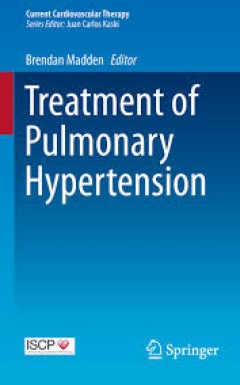
Treatment of Pulmonary Hypertension
This title will be presented as highly practical information on pharmaceutical options in pulmonary hypertension, written in a quick-access, no-nonsense format. The emphasis will be on a just-the-facts clinical approach, heavy on tabular material, light on dense prose. The involvement of the ISCP will ensure that the best quality contributors will be involved and establish a consistent appro…
- Edition
- -
- ISBN/ISSN
- 978-3-319-13581-6
- Collation
- -
- Series Title
- -
- Call Number
- -

Transfusion in the Intensive Care Unit
Due to a high incidence of anemia, critically ill patients are frequently transfused, with up to 40% of patients receiving a transfusion during their stay in the Intensive Care Unit. It has become increasingly clear that there is an association between transfusion and adverse outcomes, underlining the need for a careful assessment of the risks and benefits of a blood transfusion. In the last de…
- Edition
- -
- ISBN/ISSN
- 978-3-319-08735-1
- Collation
- -
- Series Title
- -
- Call Number
- -

Critical Phenomena in Loop Models
When close to a continuous phase transition, many physical systems can usefully be mapped to ensembles of fluctuating loops, which might represent for example polymer rings, or line defects in a lattice magnet, or worldlines of quantum particles. 'Loop models' provide a unifying geometric language for problems of this kind. This thesis aims to extend this language in two directions. The first p…
- Edition
- -
- ISBN/ISSN
- 9783319064079
- Collation
- -
- Series Title
- -
- Call Number
- -
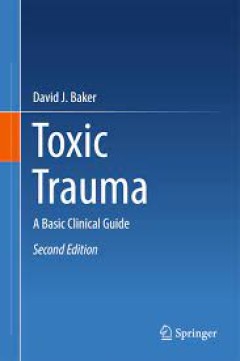
Toxic Trauma A Basic Clinical Guide
Winner of BMA Medical Book Award, Highly Commended in Public Health Written for medical professionals, this book provides a concise reference with clear guidelines on how to manage both the victims of chemical agent exposure and the site of the incident. David Baker considers the nature and basic science of the hazards faced as well as the practical management of persons exposed to chemicals…
- Edition
- -
- ISBN/ISSN
- 978-3-319-40916-0
- Collation
- -
- Series Title
- -
- Call Number
- -
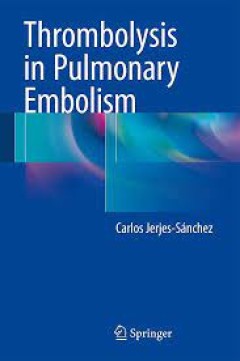
Thrombolysis in Pulmonary Embolism
This book provides an up-to-date review of the use of thrombolytic therapy in the treatment of acute pulmonary embolism. It discusses the mechanisms of thrombosis; pharmacokinetics and pharmacodynamics of the most commonly used fibrinolytics; evidence-based results from multicenter control trials in which thrombolytic treatment was administered; criteria by which pulmonary embolism patients req…
- Edition
- -
- ISBN/ISSN
- 978-3-319-19707-4
- Collation
- -
- Series Title
- -
- Call Number
- -
 Computer Science, Information & General Works
Computer Science, Information & General Works  Philosophy & Psychology
Philosophy & Psychology  Religion
Religion  Social Sciences
Social Sciences  Language
Language  Pure Science
Pure Science  Applied Sciences
Applied Sciences  Art & Recreation
Art & Recreation  Literature
Literature  History & Geography
History & Geography